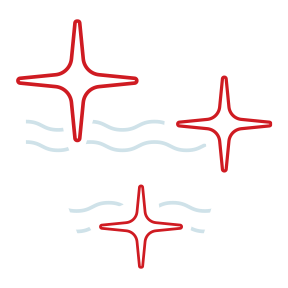Brit Weimer released an article featured in Colorado Lawyer that analyzes Coverage A of the Commercial General Liability insurance policy.
Read MoreIn the context of lawsuits against associations, the D&O insurers’ position can lead to absurd results, since most board conduct indirectly stems from its powers under the governing documents, which are for most purposes contracts between the association and its members. Three basic arguments are helpful here:
Read MoreHouse Bill 25-1043 becomes effective on October 1, 2025. There are a few things you need to know. We’ll go into each issue separately, but here are the highlights:
Read More…Another collections law passed through the legislature and was signed into law by the governor. House Bill 25-1043 becomes effective on October 1, 2025. There are a few things you need to know.
Read MoreCommunity associations frequently enter contracts with vendors, contractors and service providers that include asymmetric attorneys’ fee provisions. These clauses allow the business to recover attorneys’ fees if they prevail in litigation, while the association does not have the same right. This imbalance can expose associations to significant financial risks in litigation. Proactively engaging legal counsel during contract negotiations with local vendors and contractors can help associations mitigate these risks.
Read MoreThe business-judgment rule is an important legal doctrine in Colorado that applies to directors of common interest communities … requir[ing] courts to defer to corporate deliberations and avoid second-guessing the good-faith decisions of directors.
Read MoreMost D&O policies have an exclusion for fines, penalties, and multiplied damages. These exclusions are broadly construed, in light of public policy limitations on insurance damages that are punitive rather than compensatory in nature.
Read MoreRecently, Colorado associations have experienced astronomical premium increases from their insurers, causing HOA dues to escalate—by 200-500%! If that has happened to your association, you are not alone. Fortunately, there are proactive ways to constrain future premium increases. The “POD” acronym is helpful – Policies, Opinions and Declarations:
Read MoreCoverage for most D&O policies is not triggered without a covered “loss.” Coverage for loss is usually limited to monetary settlements and judgments. Read the full article for more information.
Read MoreUpdate to the Corporate Transparency Act and BOI filings
Read MoreHow do D&O policies relate to bodily injuries and their consequences? What role does CGL coverage play in shaping the exclusions found in D&O policies? When might a D&O policy still provide coverage? Find out more in this article:
Read MoreColorado HB 25-1043 is introduced as an act "concerning the protection of unit owners …". What does it actually entail? What are the potential impacts? Read for more info
Read MoreMost D&O policies have exclusions for property damage claims … The rationale for the property-damage exclusion is to avoid significant overlap with CGL insurance. How exactly does that play out? Read the full article for more information
Read MoreCommunity associations are increasingly feeling the pinch on insurance. Boards frequently look to their managers to provide guidance, yet it can be difficult to determine whether particular claims will likely be covered by D&O or CGL policies. To help with this, we will discuss common D&O questions for community associations in this series.
Read MoreWelcome to the Moeller Graf BlogCast! In this series, the team delves into recent legal updates affecting Colorado homeowner associations, providing essential insights for community leaders and residents alike. This episode covers key legislative changes, important court rulings, and their implications for association governance. Tune in regularly for a clearer understanding of these developments, their impact on communities, and practical advice on ensuring compliance.
Read More

















